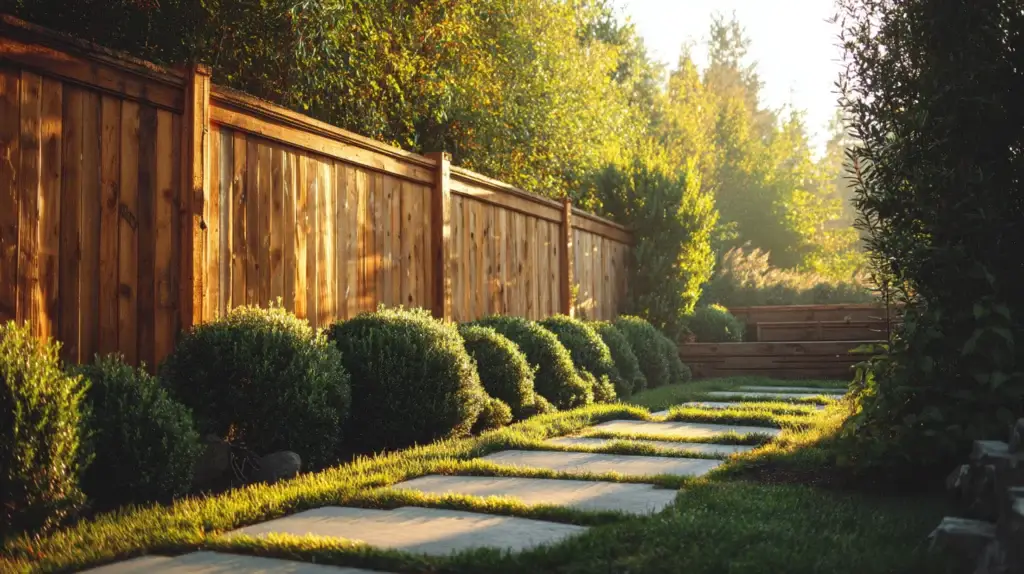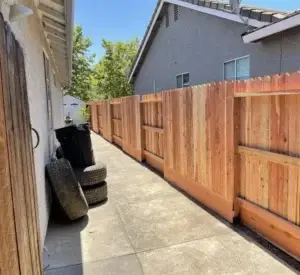Wood fences are one of the most timeless and attractive ways to define your property, enhance security, and add natural beauty to your outdoor space. Many Sacramento homeowners choose wood fencing because it blends perfectly with California’s landscapes and offers a warm, classic look. But one of the most common questions we hear is: how long does a wood fence last? The answer depends on several factors, including the type of wood, the local climate, the quality of installation, and how well the fence is maintained over time.
A well-built wooden fence can last 15 to 30 years or longer with proper care and professional installation. By understanding what affects your fence’s lifespan and taking a few simple steps, you can protect your investment and enjoy a long lasting fence that adds charm, privacy, and value to your home.
The Average Lifespan of a Wood Fence
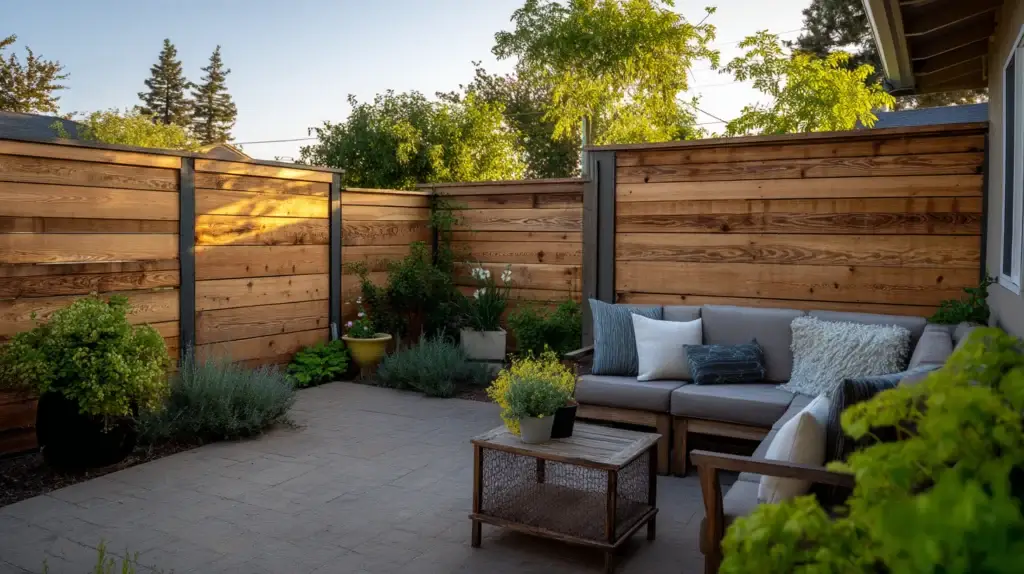
Every wood fence is different, but on average, a properly built and maintained fence lasts between 15 and 30 years. In some cases, premium materials such as cedar, redwood, or exotic hardwoods can stretch that life expectancy to 40 years or more. The lifespan of your fence depends on the type of wood, the Sacramento climate, and the level of regular maintenance you perform.
Typical Lifespan by Type of Wood
Different types of wood have very different characteristics. Here is a general overview of how long a wood fence lasts based on the material used:
- Spruce or Fir: Around 5–10 years with basic maintenance.
- Pressure Treated Pine: About 15–20 years with proper care and sealing.
- Cedar: 20–30 years with regular maintenance and protection from moisture.
- Redwood: 25–35 years, known for its resistance to rot and insects.
- Exotic Hardwoods: 40+ years when properly sealed and maintained.
Pressure treated wood and pressure treated pine are two of the most cost effective options, offering a strong balance of durability and affordability. Cedar fences and redwood fences, on the other hand, provide a premium look with excellent resistance to decay.
What “Lifespan” Really Means
When people ask how long does a wood fence last, it is important to understand that lifespan refers to both appearance and structural integrity. Your fence may still be standing after 20 years, but if the boards are warped or the fence posts are rotting, it may have lost its functionality and curb appeal. Routine inspections, cleaning, and sealing can help your fence last longer and stay attractive.
Key Factors That Affect How Long a Wood Fence Lasts
The life expectancy of a wooden fence depends on several factors that influence its durability and strength over time.
Type of Wood Used
The type of wood you choose is one of the most important factors in determining how long your fence lasts. Cedar and redwood are naturally resistant to insects, carpenter ants, and rot, making them excellent options for Sacramento’s dry but sometimes humid climates. Pressure treated lumber offers solid protection against moisture and pests, while untreated wood is more likely to break down faster. Treated lumber and treated wood both resist decay much better than untreated options.
Climate and Environment
Sacramento experiences hot summers, cool winters, and occasional rain. This mix of sun and moisture can cause untreated wood to warp or crack. Fence panels exposed to constant sunlight fade more quickly, while areas with poor drainage may trap moisture that leads to rot. Installing fences with proper grading, concrete footings, and good airflow can prevent many of these issues.
Quality of Installation
Proper installation makes a world of difference in how long your wood fence lasts. Poorly dug post holes or shallow concrete footings can cause the structure to lean or collapse over time. At Fantastic Fence, we use corrosion resistant fasteners, high quality materials, and professional installation techniques to ensure every fence is built to last. Proper installation and attention to detail protect your investment and add years to your fence’s life.
Maintenance and Upkeep
Regular maintenance is essential for a long lasting fence. Cleaning the boards, applying stain or paint, and performing regular inspections help prevent rot, mold, and insect damage. Homeowners should trim vegetation away from the fence to improve airflow and reduce moisture buildup. Annual maintenance, including resealing every 2–4 years, can help your fence withstand Sacramento’s weather and maintain its natural beauty.
Signs Your Wood Fence Is Nearing the End of Its Life
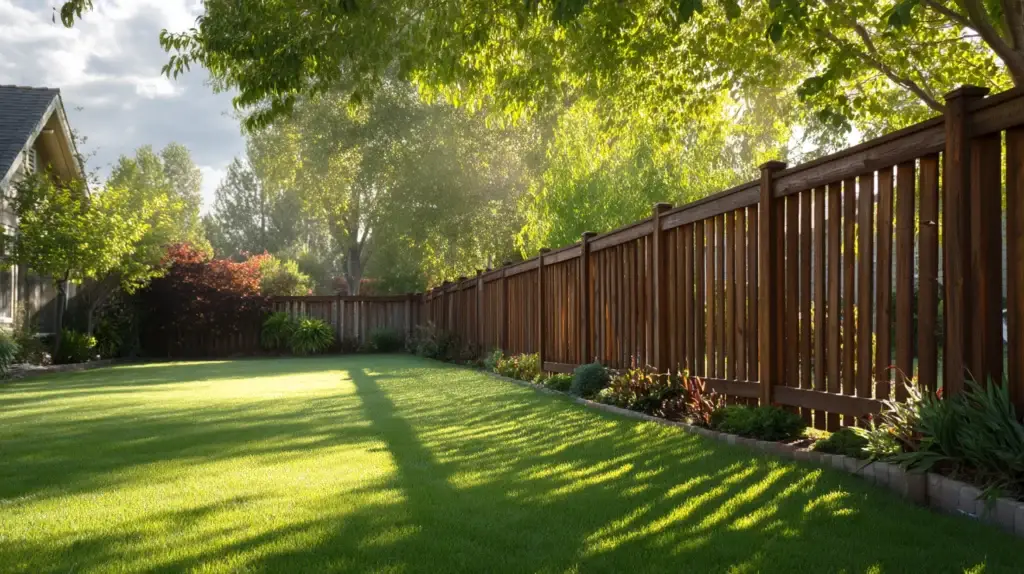
Even the best wood fences eventually show signs of wear. Recognizing early warning signs helps you repair small problems before they turn into costly replacements.
Common Warning Signs
- Rotting or soft boards near the base
- Leaning or sagging fence panels
- Loose or rusted nails and screws
- Faded stain or peeling paint
- Damage from carpenter ants or termites
- Posts shifting out of alignment
When these issues appear, prompt repairs can often extend the fence’s lifespan. However, widespread rot or broken fence posts may indicate that replacement is the best option.
Repair or Replace?
A fence’s life can often be extended with repairs if only a few sections are damaged. But when multiple panels or posts have lost their structural integrity, replacing the fence may be more cost effective. A new fence built with durable, high quality materials and proper care will last decades longer.
How to Make Your Wood Fence Last Longer
Keeping a wood fence in great shape takes commitment, but the payoff is worth it. A properly built fence that receives regular maintenance can easily exceed its average life expectancy.
Regular Cleaning and Inspection
Dirt, debris, and plant growth can trap moisture against the wood and lead to decay. Clean your fence every spring with mild soap and water, check for loose nails, and replace damaged boards. Regular inspections prevent small issues from spreading.
Proper Sealing, Staining, and Painting
Applying a quality stain or paint every few years is one of the easiest ways to protect your fence. Stains penetrate the wood and seal out moisture, while paint provides a strong UV barrier. Choose products designed for outdoor use and reapply as needed. Properly sealed fences can last 5–10 years longer than unprotected ones.
Smart Design and Building Choices
When building a new fence, certain design choices can significantly improve longevity. Keeping fence panels slightly above the ground allows for airflow and prevents moisture buildup. Using gravel or concrete footings beneath posts prevents wood from sitting in wet soil. Properly built fences also include corrosion resistant fasteners that hold up in Sacramento’s changing climate.
Routine Professional Maintenance
A professional inspection once a year ensures your fence stays in top condition. Expert technicians can identify weak spots, perform small repairs, and reseal wood as needed. This kind of regular maintenance not only keeps your fence looking beautiful but also adds years to its lifespan.
Comparing Wood Fence Lifespan to Other Materials
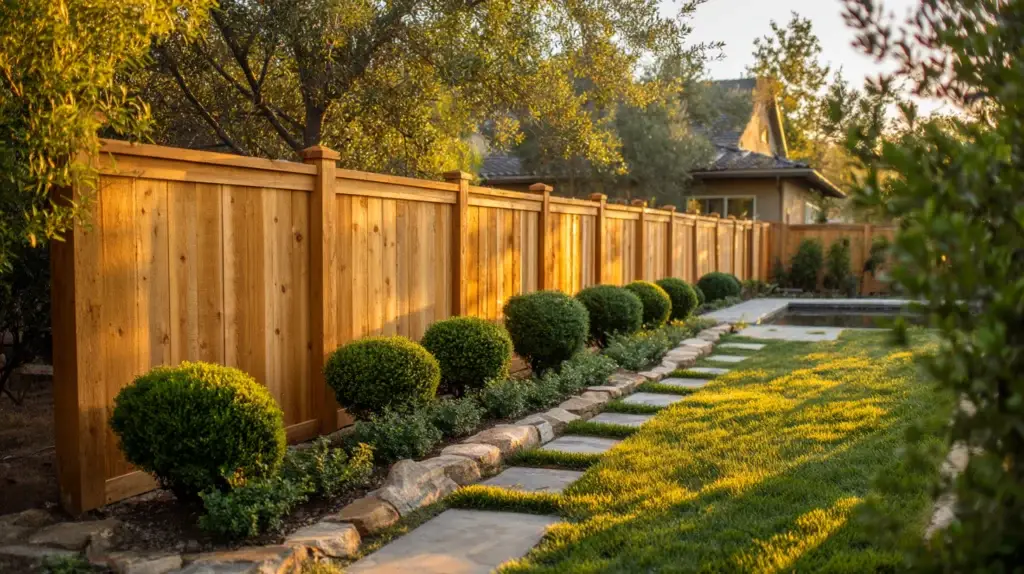
Many homeowners wonder how long a wood fence lasts compared to other fencing materials. While wood offers unmatched warmth and character, other options may require less maintenance.
Vinyl Fencing and Vinyl Fences
Vinyl fencing is known for its low maintenance and long lifespan, often lasting 30 to 50 years. Vinyl fences do not rot, warp, or attract insects. They are highly durable and come in a variety of colors and styles. The downside is that vinyl can crack under extreme temperatures and lacks the natural beauty of wood fencing.
Aluminum Fencing, Wrought Iron, and Metal Fences
Metal fences such as aluminum fencing or wrought iron offer exceptional durability and security. These materials can last 50 years or more with minimal maintenance. They are corrosion resistant and ideal for homeowners seeking strength and elegance. However, metal fences can be more expensive and may not provide the same privacy as wood.
Chain Link and Composite Fencing
Chain link fences are a practical, cost effective choice that can last up to 25 years. They provide excellent security and require very little upkeep, but they do not offer much in terms of aesthetics or privacy. Composite fencing, made from recycled wood and plastic, delivers durability and less maintenance than traditional wood fencing. It can last 30–40 years and resists rot and fading.
Why Many Homeowners Still Choose Wood Fencing
Despite the alternatives, wood fencing remains a favorite among Sacramento homeowners. The natural beauty of wood, its design flexibility, and its warm appearance simply cannot be matched. When properly built with treated wood and maintained with care, a wood fence offers decades of reliable performance and classic charm.
Cost, Longevity, and Value
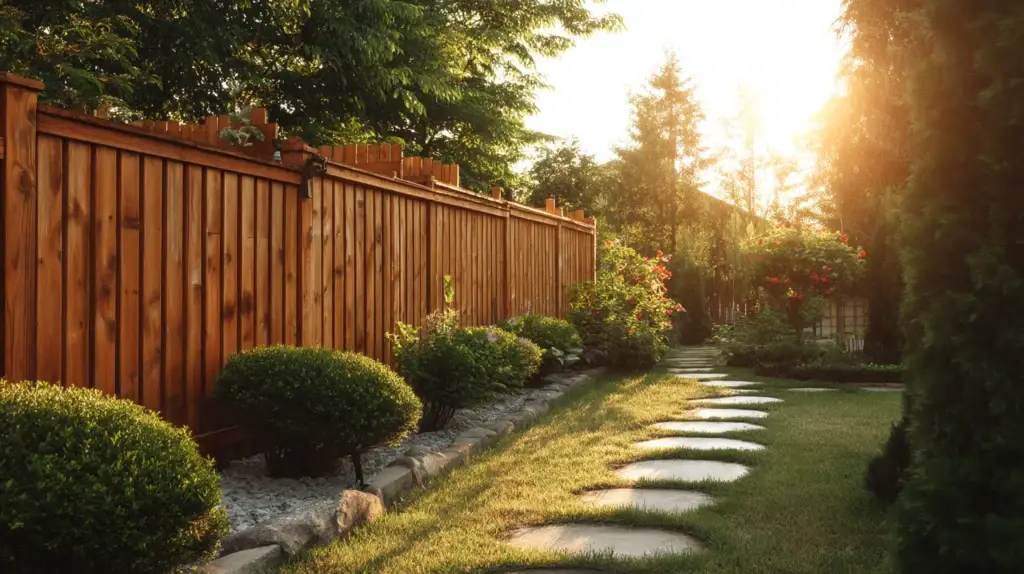
When comparing materials, wood fences often provide the best balance between cost and aesthetics. Vinyl fencing, metal fences, and composite fencing last longer but come with higher upfront costs. A well-built cedar fence or redwood fence offers a great middle ground, combining beauty with durability. With proper care, wood fencing provides outstanding curb appeal and lasting value.
A Smart Investment in Your Property
A new fence not only enhances privacy and security but also increases your home’s value. Wood fences, in particular, complement Sacramento’s natural landscape and blend well with both modern and traditional homes. With regular maintenance, your fence will look beautiful and perform well for decades.
FAQs About Wood Fence Lifespan
How long does a wood fence last in Sacramento?
A typical wood fence lasts 15–30 years depending on the type of wood, installation quality, and maintenance routine.
Does pressure treated wood last longer?
Yes, pressure treated lumber resists rot, insects, and moisture, extending the fence’s lifespan by many years.
How often should I stain or paint my fence?
Most fences should be restained or repainted every 2–4 years to maintain protection from UV rays and weather.
What causes a wood fence to rot?
Excess moisture, poor drainage, and untreated wood are common causes of rot. Keeping vegetation trimmed and maintaining sealants prevents decay.
When should I replace my wood fence?
If large sections are leaning, rotting, or structurally unstable, replacement is the best long term solution.
Is a wood fence better than vinyl fencing?
Wood fencing offers natural beauty and design flexibility, while vinyl fencing requires less maintenance. The right material depends on your style preferences and maintenance goals.
Can regular maintenance really extend a fence’s life?
Absolutely. Annual maintenance, including sealing and inspections, can add many years to your fence’s life.
Build a Long Lasting Fence with Fantastic Fence
At Fantastic Fence, we specialize in building and maintaining fences that stand the test of time. Our team uses high quality materials, professional installation methods, and attention to detail that ensures your fence’s structural integrity and long term performance. Whether you prefer the warmth of cedar, the strength of redwood, or the affordability of pressure treated pine, we’ll help you choose the right fence for your home.
We understand Sacramento’s unique weather and soil conditions, and we build every fence with those factors in mind. From digging secure post holes and setting sturdy concrete footings to using corrosion resistant fasteners and durable stains, every step we take is designed to protect your fence and extend its life. If you’re considering a new fence or need help maintaining your existing one, reach out to Fantastic Fence. We’ll help you select the right material, provide expert guidance on maintenance requirements, and deliver craftsmanship that lasts for decades.
Get your free estimate today and discover how a properly built wood fence can enhance your property’s beauty, security, and value for years to come.

